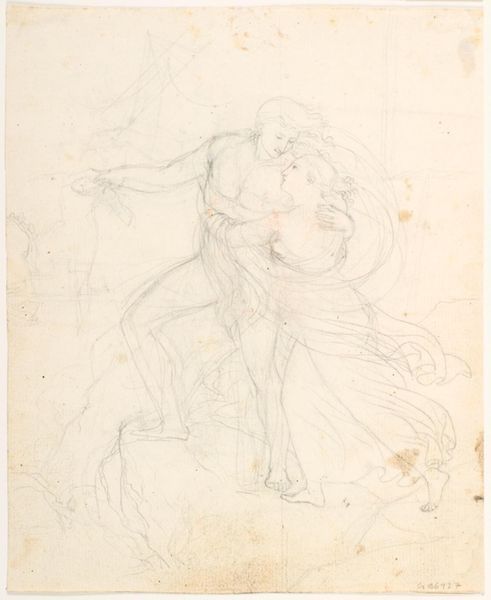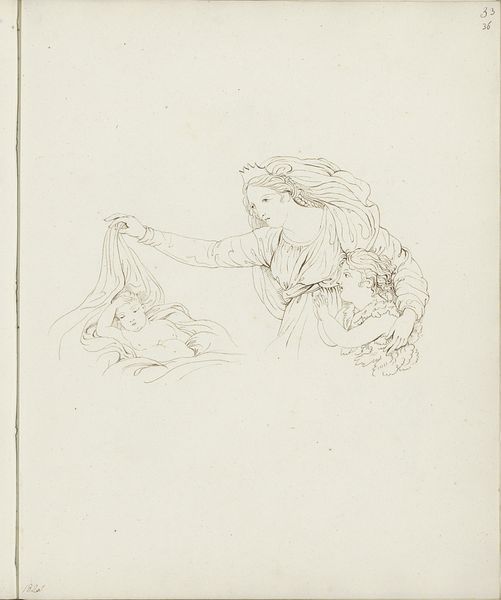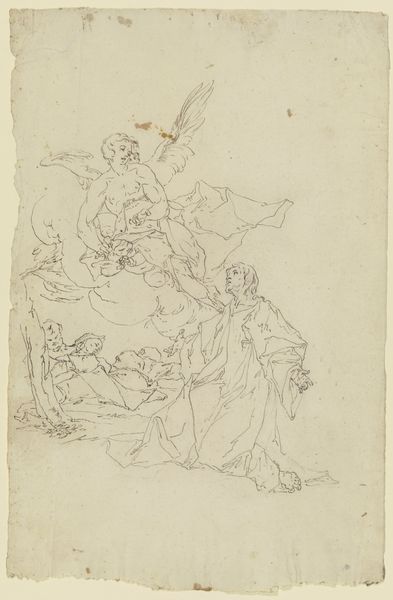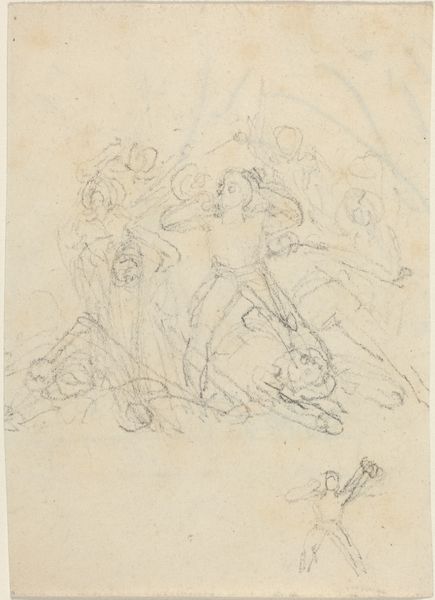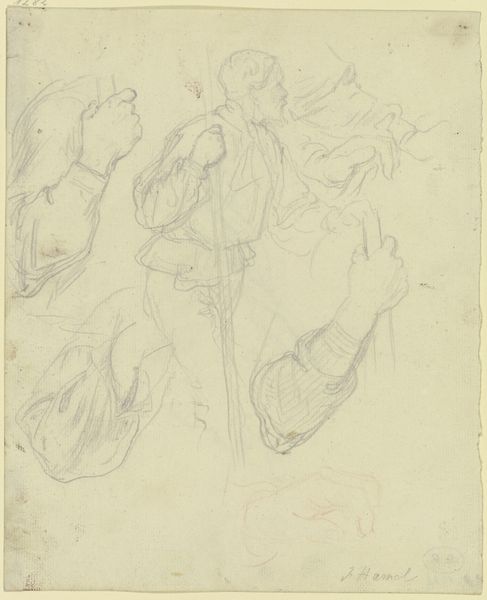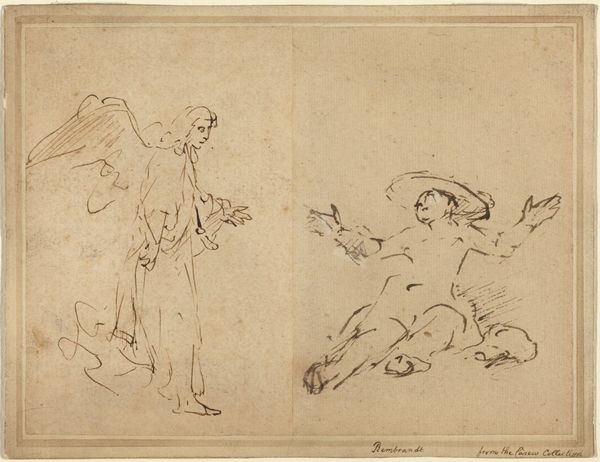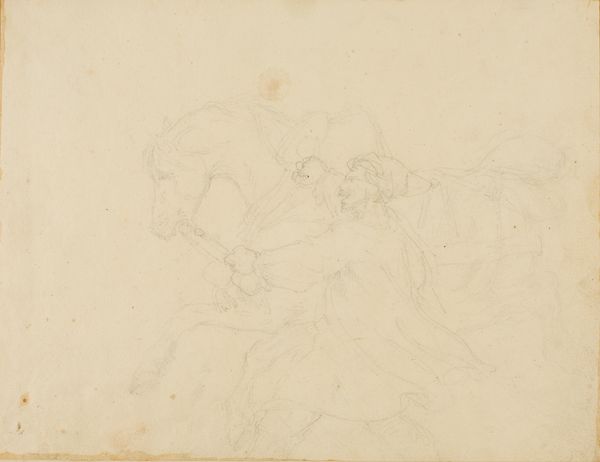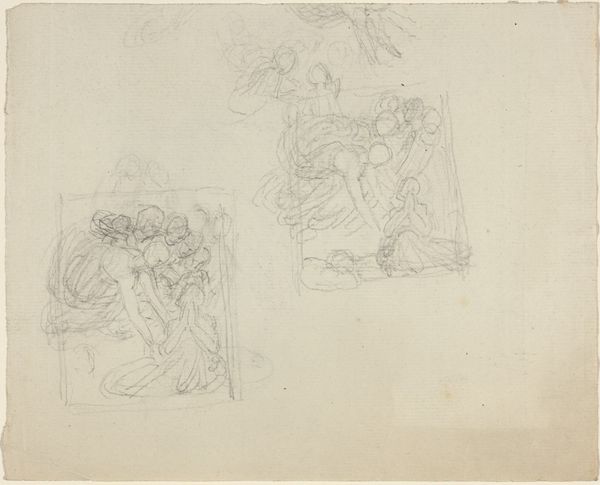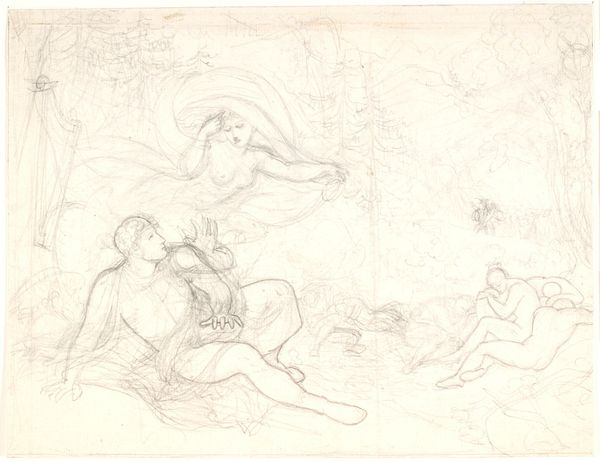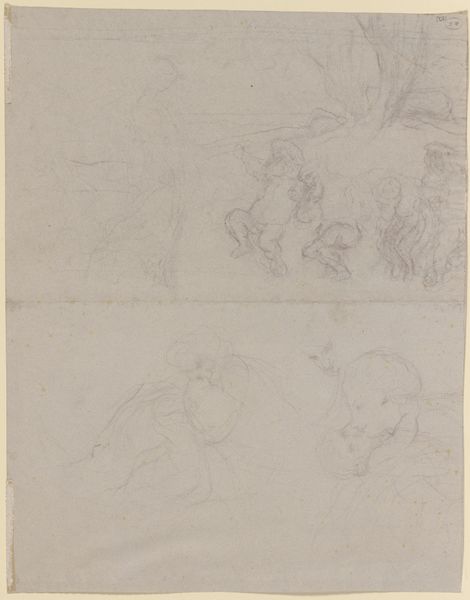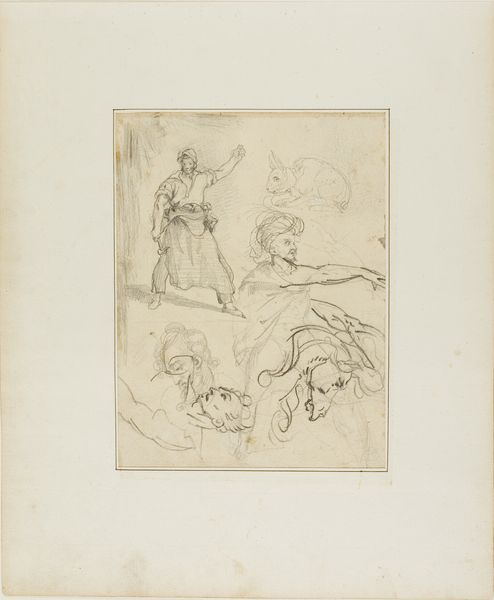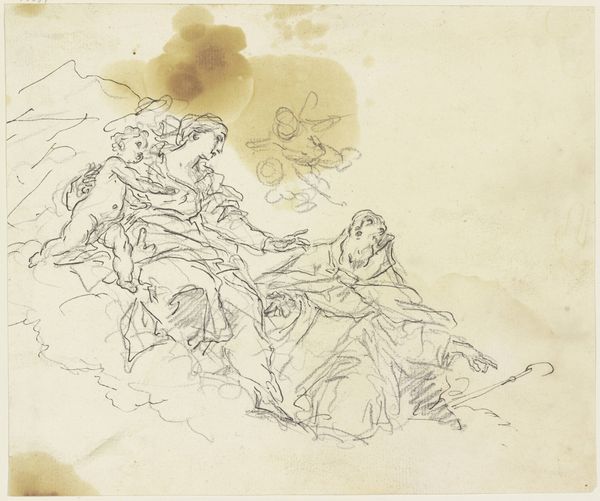
drawing, pencil
#
drawing
#
16_19th-century
#
narrative-art
#
figuration
#
romanticism
#
pencil
Copyright: Public Domain
Curator: Here we have a pencil drawing by Julius Hamel, titled "Studienblatt_ Die flehende Helfensteinerin im _Bauernkrieg_," currently held at the Städel Museum. Editor: It strikes me immediately as raw and vulnerable. The sketchiness amplifies the feeling of urgency in the woman’s raised hand and pleading expression. The fragility of the medium conveys a palpable sense of desperation. Curator: Hamel was a history painter, though it’s worth remembering what "history painting" meant in the 19th century. He’s less concerned with historical accuracy than with evoking Romantic themes of tragedy and heroism. Editor: Precisely! Observe how the composition focuses on the emotional relationship between mother and child, distilled into form. Notice the stark lines. Curator: Hamel uses the figure of the "Helfensteinerin," to symbolize both aristocratic suffering and peasant oppression during the "Bauernkrieg", the German Peasants’ War in the 16th century. She’s placed between two sides of the social spectrum. Editor: And observe the dynamic asymmetry created by the artist; that raised hand of the woman. It evokes power, resistance, or pleading. The woman and the child form a compositional mass. Curator: I find it interesting that, as a Romantic artist, Hamel sought to evoke strong feelings toward social justice, in an effort to move people from within the established structures of artistic production of his era. His career and legacy reveals the politics inherent in how we remember the past, how its events are chosen for representation, and what conclusions may be drawn. Editor: A fascinating convergence, wouldn't you say? These formal components draw viewers into the painting, allowing them to project and participate with Hamel's subject. It's where formalism transcends mere observation and enables understanding. Curator: It's an artwork, perhaps unintentionally, speaking not only about 16th century battles but about 19th-century cultural memory, artistic practices, and politics. Editor: Precisely! Form and context, converging to provide an unforgettable emotional statement.
Comments
No comments
Be the first to comment and join the conversation on the ultimate creative platform.
